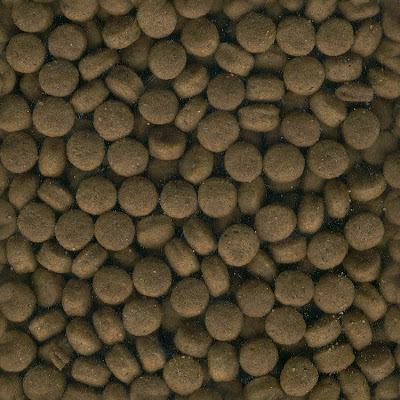The essential guidelines for puppy-proof your home and identifying illnessAs a new puppy parent, it's important to learn about common puppy behavior, safety concerns and common symptoms of illness so that appropriate action can be taken if your puppy gets sick or hurt. When you bring a new puppy home, you are suddenly responsible for an innocent life—one that’s completely dependent on you. However, when puppy poops on the floor or whines all night long, you might be thinking, “What the heck have I gotten myself into?”
Between managing the puppy’s training and worrying if you’ve puppy-proofed your house adequately, new dog ownership can be overwhelming. Proper dog care and training are critical during your puppy’s first few months in their new home. If you suspect your puppy might be sick, take him or her to the vet immediately. For common digestive ailments and bumps and scratches, your vet will probably prescribe an over-the-counter human treatment, like Pepto Bismal or an anti-biotic ointment, to treat upset stomach and abrasions. However, for more serious conditions, like kennel cough, your vet will likely prescribe more expensive animal drugs. A great way you can save money of on medication is to buy affordable
Canadian drugs from a reputable online pharmacy.
It’s a good rule of thumb, to check with a veterinarian first if you suspect your pet is hurt or ill, however to make things easier on you and safe for puppy at home, we’ve put together a list of essential puppy care tips that will help you puppy-proof your home and identify if your puppy is sick:
1. Get a crate for your puppy—and use it
A crate not only makes housetraining easier, it a fantastic tool for managing the safety of your young pup. A crate is a private area for your puppy where they feel secure and stay safe when you’re not at home from dangerous household items, such as electrical wires, household cleaners and poisons, or choking on foreign objects. An added bonus is that the crate will help the housebreaking process and discourage any bad messing behaviors.
2. Put puppy’s crate next to your bed for the first few nights
This will help establish the crate as a safe haven for your pup. If you make him or her sleep the first few nights in the dark basement or laundry room the pup will develop fright towards being crated.
3. Get a baby gate (in this case a puppy gate)
Use the gate the same way as you would for a child to keep the puppy out of places that pose a danger, for example, block out living rooms with exposed electrical cords or stairwells when you’re not supervising.
4. Supervise your new pup
Just like a new crawling baby, you have to watch your puppy with an eagle eye until he or she adjusts to their new surroundings or else their curiosity may find them choking or falling down a flight of stairs.
5. Set up a puppy routine
Puppy’s day, as well as yours, will go a lot more smoothly if you develop a regular routine. That way puppy will know what to expect from the day and not seek out foreign things to chew and get into out of boredom.
6. Enroll puppy in dog training
Basic obedience if of benefit to puppy and you. Obedience classes teach a pup to socialize with other puppies and people—and curb nasty habits like biting or aggressiveness.
7. Develop a puppy playlist for the entire family
Puppy should follow the same routine and rules, regardless of which family member is on dog duty. Sit down as a family to discuss training cues, housetraining and walking rules and agree that everyone stick to them.
8. Get your pup used to being touched
If you regularly touch his or her feet, nails, tail, ears, mouth, teeth, and belly with love—puppy will be more responsive during vet checkups.
9. Groom puppy early on and regularly
This will, again, establish a good pre-vet routine. Also, the act of grooming let’s you examine the pup for broken nails, teeth, sores or lumps that could be more serious if not caught early on.
10. Let your pup experience it all
From people in hats to car rides and from walking on a busy street to other animals, if you socialize your pet they won’t be traumatized or frightened by things and bite or run, which could endanger their wellbeing.
11. Get puppy a teething tool
A non-consumable Kong toy filled with peanut butter or a frozen wet wash cloth all ease pups growing teeth and strengthen their teeth and gums.
12. Pick up anything puppy might chew
If you leave lose objects around your house, puppy could choke or injure their mouth or teeth chewing on sharp objects.
13. Get your pup micro-chipped
If a scared or excited puppy runs away, a micro-chip could be your best hope of finding them. Vets provide dog micro-chipping for around $25 to $40.
14. Check out what puppy poops
I know it’s gross, but a quick poop check could save your puppy’s life if you notice diarrhea or blood in stool. Abnormal bowel movements are a sign of ill health and mean you should take your dog to the vet immediately.
15. Give puppy his or her own toys
If you provide your pup with designated toys, he or she will less likely to chew on your couch, furniture and household items that could put them in danger.
16. Remind yourself regularly that your pup is still a baby
And human babies don’t do much. Be patient and rather than using sever discipline to force your pup to sit or stay. Aim to socialize your puppy with other people and dogs—and develop a bond!
Bio: Bernice Spradlin is an avid hiker and runner. She works at a gym in Brooklyn, New York, where she gets great inspiration for her freelance health-related articles and blogs. In her off time, you can often find Bernice jogging the East River path along the waterfront and enjoying the cool breeze. Bernice is currently looking for freelance writing work, and can be contacted at BerniceG.Spradlin@gmail.com
Technorati Tags: All About Labradors Labrador Retriever Labradors Dogs Pets
Continue Reading...











